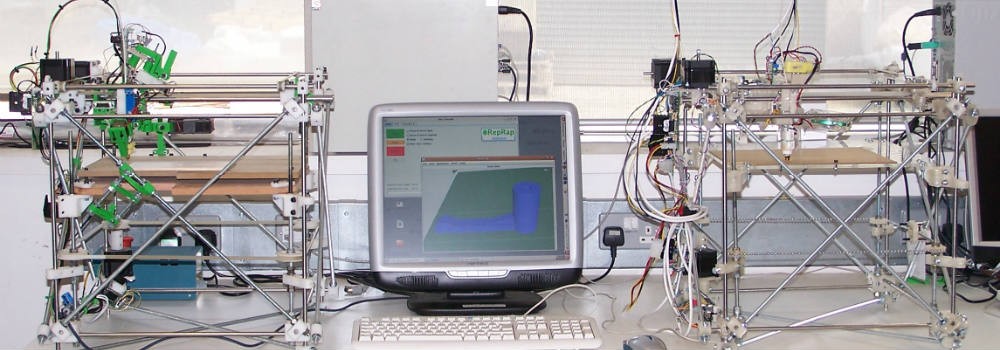Of Viral 3D and Perpetual Printing
It’s being able to show different aspects of what you can do, and it’s proof of abilities beyond a piece of paper saying what you have done, says Groenendyk.
Future Forecasts
The full impact of 3D printers on learning environments is still unknown. Over the past eight years, initiatives like the RepRap Project have increased general accessibility by driving down costs, but more time is needed to gage the full impact of the technology.
“We don’t know how this is going to influence education. When computers first started rolling out and being available to everyone, we didn’t necessarily know how it was going to impact humanities, arts, sciences, and so forth. This is a very similar situation,” says Comeau.
The RepRap project succeeded in removing 3D printers from niche markets, and that in itself creates a frontier of possibilities. For Comeau, the new environment of experimentation and creativity signals exciting developments ahead.
“From our perspective, we feel that if we can take what used to be a niche technology and bring it to everybody, we’re going to see some surprising, interesting, and no doubt educational pieces come out of it.”
Melissa Goertzen is a freelance research consultant and writer based in Halifax, Nova Scotia. In October 2012, she graduated from the Master of Library and Information Studies program at Dalhousie University. To learn more, please visit her website at melissagoertzen.wordpress.com.
Sources
Photo courtesy to Presspix of Reprap (The First Reprap Machine)
The Economist – 3D printing – Difference Engine: Making it
Dal News – A third dimension in printing – Now in the Killam Library
Forbes – 3D Printing Will Transform Education
Teachthought – 10 Ways 3D Printing Can Be Used in Education [Infographic]
Dalhousie Repository – 3D Model Repository at Dalhousie University































Share the post "Of Viral 3D and Perpetual Printing"